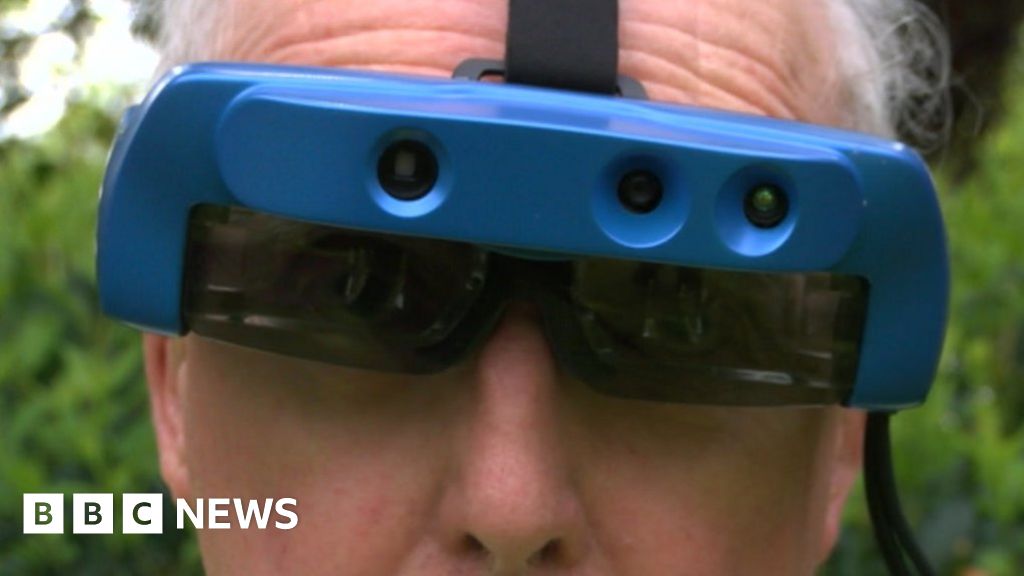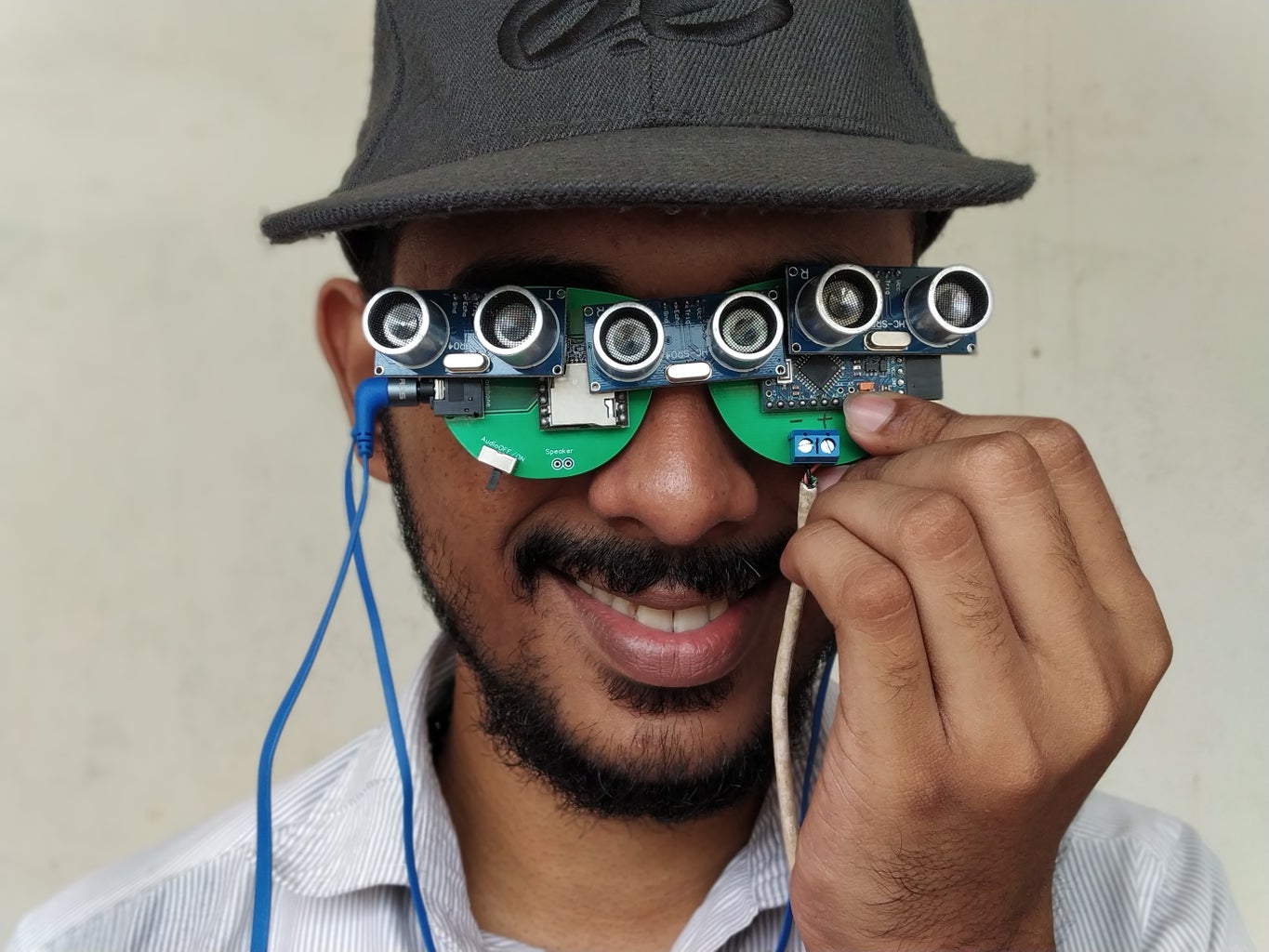How Smart Glasses for the Visually Impaired Are Revolutionizing Daily Life
Wiki Article
Empowering Independence With Assistive Modern Technology for the Blind
The integration of assistive technology for people that are blind or aesthetically damaged represents a substantial innovation in promoting freedom and improving top quality of life. With a range of gadgets-- from display readers to ingenious responsive tools-- these innovations not just help with navigating and interaction but likewise advertise social inclusion and engagement in numerous elements of life.Comprehending Assistive Innovation
Although assistive modern technology has actually developed dramatically for many years, its basic purpose stays the same: to improve the lifestyle for individuals with disabilities, particularly those that are blind or visually damaged. This modern technology includes a broad array of tools and devices that promote self-reliance and performance in day-to-day activities.Assistive technology can be classified into low-tech and sophisticated options, each made to fulfill certain demands. High-tech devices frequently include software application applications, specialized hardware, and flexible devices that utilize sophisticated innovation to offer assistance in different contexts. Alternatively, low-tech options may entail daily products that are customized to enhance availability, such as magnifiers or tactile pens.
The combination of assistive innovation into the lives of people that are blind or visually impaired not just advertises autonomy yet also cultivates social inclusion and engagement in academic and professional environments. By leveraging these modern technologies, customers can browse their surroundings, accessibility details, and interact effectively, therefore boosting their total top quality of life. Understanding assistive innovation is critical for experts, caretakers, and advocates that aim to support individuals in optimizing their potential and accomplishing greater freedom.
Sorts Of Assistive Tools
Assistive gadgets for the blind and visually impaired are essential tools that improve daily obeying attending to certain difficulties experienced by users. These gadgets can be broadly categorized into 3 major types: optical devices, digital devices, and sensory tools.
Sensory devices, such as Braille screens and responsive maps, supply different means to receive details. Braille shows transform digital message into Braille, allowing customers to go through touch. Tactile maps use spatial understanding via raised structures and lines, enabling better ecological awareness.
With each other, these assistive tools equip people with aesthetic impairments to involve even more totally with their surroundings, advertising greater independence and confidence in everyday tasks.

Effect On Day-to-day Live
The integration of assistive modern technology right into the every day lives of people that are blind or visually damaged substantially boosts their ability to engage and navigate with the globe around them. Devices such as screen visitors, Braille displays, and mobile applications promote access to information, allowing customers to engage with digital web content, interact efficiently, and take care of daily tasks independently.Additionally, modern technologies like smart glasses and navigation apps supply real-time help in unknown atmospheres, boosting mobility and confidence. These tools make it possible for users to recognize barriers, reviewed signs, and even recognize faces, therefore fostering a feeling of freedom in public areas. Furthermore, home see automation systems, which can be controlled via voice commands, permit individuals to handle their living atmospheres much more properly, improving comfort and security.
The effect of assistive modern technology prolongs beyond functional tasks; it promotes social inclusion and emotional health. By linking the gap between people and their environments, these technologies encourage users to take part completely in community tasks, pursue academic possibilities, and participate in meaningful partnerships. Eventually, the development of assistive modern technology contributes in redefining the possibilities for people that are blind or aesthetically damaged, leading to an extra inclusive and available culture.
Success Stories and Reviews

An additional powerful testimonial originates from Mark, a recent university grad who used display reading software application throughout his scholastic journey. This technology enabled him to access program products and join discussions, ultimately bring about his successful change right into the labor force. Mark credit scores assistive modern technology for equipping him to accomplish his occupation goals, stressing its role in leveling the having fun area for people with aesthetic impairments.
Furthermore, recreation center have actually reported enhanced engagement in their programs thanks to the introduction of easily accessible electronic platforms. These systems have made it less complicated for individuals to connect, share resources, and support each other. These success stories jointly underscore the profound effect of assistive technology in fostering self-reliance, enhancing top quality of life, and damaging down barriers for the visually damaged and blind area.
Future Patterns in Assistive Technology
Arising innovations are positioned to change the landscape of assistive tech for individuals who are blind or aesthetically impaired. Advancements in expert system (AI) and device learning are boosting the capacities of devices, allowing even more instinctive user experiences. AI-driven applications are significantly able to recognize items and read text out loud in real-time, providing users with valuable details about their environments.Furthermore, advancements in wearable technology are creating new possibilities for freedom. Smart glasses furnished with enhanced truth functions can overlay vital details onto the customer's visual field, assisting in navigation and interaction with the environment. The integration of Net of Things (IoT) devices is enhancing access in smart homes, permitting individuals to manage appliances and receive notices via voice commands or tactile user interfaces.
The advancement of braille display screens and tactile responses systems is also rising, promoting access to digital material and improving communication. As these innovations proceed to advance, they promise to enhance everyday living, educational opportunities, and work potential customers for people with aesthetic disabilities. Continuous partnership in between technologists, users, and advocacy teams will certainly be vital in ensuring these technologies satisfy the demands of the area successfully.
Conclusion
In verdict, assistive modern technology plays a crucial duty in boosting the self-reliance of people who are visually damaged or blind. By providing vital devices and sources, these modern technologies facilitate enhanced gain access to, communication, and navigation to information, thus promoting freedom and positive self-image. The transformative impact of assistive tools not just promotes reliable communication with the setting however likewise motivates social inclusion and engagement in numerous facets of life, eventually empowering customers to prosper within their areas.The important site combination of assistive see here now modern technology for people that are blind or aesthetically damaged represents a considerable improvement in fostering freedom and boosting high quality of life.The combination of assistive technology right into the lives of individuals who are blind or visually hindered not just advertises freedom however also fosters social incorporation and engagement in specialist and instructional atmospheres. Inevitably, the advancement of assistive technology is crucial in redefining the possibilities for individuals who are blind or aesthetically damaged, leading to a much more inclusive and obtainable society.
Many individuals that are blind or aesthetically impaired have shared inspiring success stories that highlight the transformative impact of assistive innovation on their lives.In conclusion, assistive modern technology plays a critical role in boosting the self-reliance of people that are visually impaired or blind.
Report this wiki page